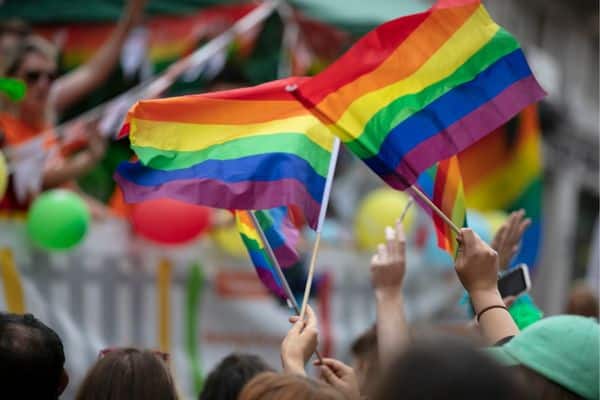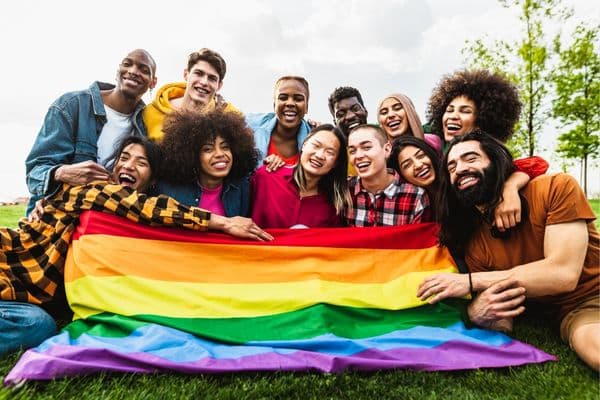
When was Pride Month Invented: A Journey Through LGBTQ+ History
Table of contents
- The Stonewall Uprising: The Ignition of the LGBTQ+ Movement
- Marching to Equality: The First Pride Celebration
- From March to Month-Long Celebration: The Evolution of Pride Month
- The Corporate Rainbow: the Role of Businesses in Celebrating Pride Month
- The Legacy of Pride Month: Celebrating, Remembering, and Advocating
When was Pride Month Invented?
Pride is an annual celebration of the LGBTQ+ community, but have you ever asked yourself, when was pride month invented? The history of Pride Month can be traced back to the Stonewall Riots in 1969, a pivotal moment in the fight for LGBTQ+ rights. The riots sparked a wave of activism and a growing sense of community among LGBTQ+ people, leading to the first Pride Parade in New York City the following year.
However, the concept of a designated month to celebrate LGBTQ+ identity and culture took some time to develop. In this blog post, we’ll explore the history of Pride Month, including the events that led up to its establishment and how it has evolved over the years. We’ll also take a closer look at some of the controversies and criticisms surrounding the celebration, as well as the ongoing struggles for LGBTQ+ rights worldwide.
The Stonewall Uprising: The Ignition of the LGBTQ+ Movement
The Uprising was the tipping point of the Gay Liberation Movement whereby activists campaigned against a police raid at the Stonewall Inn, a gay bar in Manhattan. At the time, homosexuality was deemed illegal in almost every state of America, meaning bars and restaurants were shut down for having gay employees or serving gay customers.
Transgender woman and activist Marsha P. Johnson picked up the first brick that sparked a series of spontaneous protests by members of the gay community and ignited a new era of resistance. Mark Segal was one of many LGBTQ+ patrons standing outside Stonewall Inn that night.
“We were enraged because, in a sense, 2,000 years of repression built up in us. And the New York City Police Department that night, when they violently came into Stonewall and beat people up against the wall and extorted money from people, got us angry.”
“And it was that night that we said to the police, ‘We are taking our street back. This is our neighbourhood. You are no longer going to control us. You’re no longer going to dominate us. We’re going to create our identity. We’re going to create a community where you wouldn’t allow us to have community,’” Segal said.
While raids on gay bars were commonplace in the sixties, police officers suddenly lost control of the Uprising at the Stonewall Inn on June 28, 1969.
Within weeks, activist groups formed and demanded the right to live freely and without fear of legal discrimination. These historic demonstrations changed the course of the LGBTQ+ history as we know it.
Marching to Equality: The First Pride Celebration
When did Pride Month start?
A year after the Uprising, the first Pride march took place in Chicago, New York City, and Los Angeles in June, 1970. “Gay Liberation is for the homosexual who stands up, and fights back,” read one 1970 article in the Gay Liberation Front News. Around the country, groups began to plan celebratory marches. The first being the Chicago Pride Celebration on June 27, 1970 that saw some 150 protestors march from Civic Center Plaza to Washington Square shouting slogans such as “Gay power to gay people” and “Gay, gay, all the way!”
The next day, thousands of people gathered in Greenwich Village in New York City. Shirtless men walked hand-in-hand kissing, while others held signs boldly declaring their sexual orientation. “As we kept going, the crowd grew and grew,” activist Jerry Hoose told TimeOut New York’s Raven Snook in a 2019 interview. “No one who was there can talk about it without goosebumps. I always say that gay liberation was conceived at Stonewall in 1969 and born at that march.”

When was the first Pride march in the UK?
The country’s first official Gay Pride Rally was held in London on July 1, 1972 and saw the support of two thousand people in a carnival parade of protest. This date was chosen as it was the closest Saturday to the anniversary of the Stonewall Uprising. Peter Tatchell, one of the organisers, said: “Our aim was to show that we were proud, not ashamed. Determined to come out of the shadows and stand up for our rights, we wanted to make ourselves visible and demand LGBT liberation.”
From March to Month-Long Celebration: The Evolution of Pride Month
Pride marches continued, becoming bigger and more widespread with every passing year. Initially, the last Sunday in June was celebrated in the United States as “Gay Pride Day,” but this “day” has since grown to encompass a month-long series of worldwide celebrations.
In 1999, President Bill Clinton officially marked June as Gay and Lesbian Pride Month, setting aside the month as a time to recognise the activism and achievements of the LGBTQ+ community. The month-long celebration is a call for greater unity, visibility and equality, celebrating the community through a series of events, including film festivals, art exhibitions, marches, concerts and other programmes.
Today, hundreds of month-long events are held around the world every June. The once risky parades are now prevalent in most cities. In 2019, the 50th anniversary of the Stonewall Uprising saw approximately 150,000 people march in New York City while around five million people attended the city’s Pride event
The Corporate Rainbow: the Role of Businesses in Celebrating Pride Month
When Gay Pride month comes around, businesses transform into a colourful carnival of pro-LGBTQ+ campaigns. While the month-long celebration can help companies show support to employees and use their platforms to promote diversity, equity, and inclusion, some organisations have been called out for rainbow-washing by using Pride as a marketing tactic without real activism or support.

What is rainbow-washing?
It’s the act of adding rainbow colours and imagery to branding, advertising, merchandise, and social media campaigns, ostensibly to support LGBTQ+ people during Pride month. To actively support the community, businesses must move beyond public gestures of support and implement diversity and inclusion into everyday corporate culture. Not only will this increase job satisfaction but overall company performance. According to Nicole Robinson, Associate Partner at McKinsey & Company, research shows that diverse businesses are 35% more likely to outperform their competitors.
The Legacy of Pride Month: Celebrating, Remembering, and Advocating
Until everyone has reclaimed their rights and the freedoms that they are denied, the Movement will continue to be as important as the first protest in 1969. Since its beginning, Pride has been a political event. Community campaigners in New York City such as Marsha P. Johnson, Sylvia Rivera, and Miss Major Griffin-Gracy protested against unfair treatment and advocated for legal reform.
Now, Pride month continues to inspire change and demonstrate how communities are stronger, better, and prouder together. This year, the theme is ‘Behind the Lens’. The theme will highlight the work of LGBTQ+ people in TV and film, and shed light on how the media portrays the community versus the lived experiences of LGBTQ+ people.
Final thoughts
Pride month honours the pioneers of the Gay Liberation Movement and is a reminder that, together, we can still fight for our rights. It creates a worldwide conversation of diversity and acceptance. It allows families, friends and businesses to become familiar with Pride and stand up for its values. The unstoppable spirit of the movement has pushed up against police discrimination in 1969, spread worldwide by 1980 and seen the legalisation of same-sex marriages in the 2000s.
While the fight for LGBTQ+ equality is far from complete, the distance travelled in the last century is reason to be optimistic.



 Read More
Read More